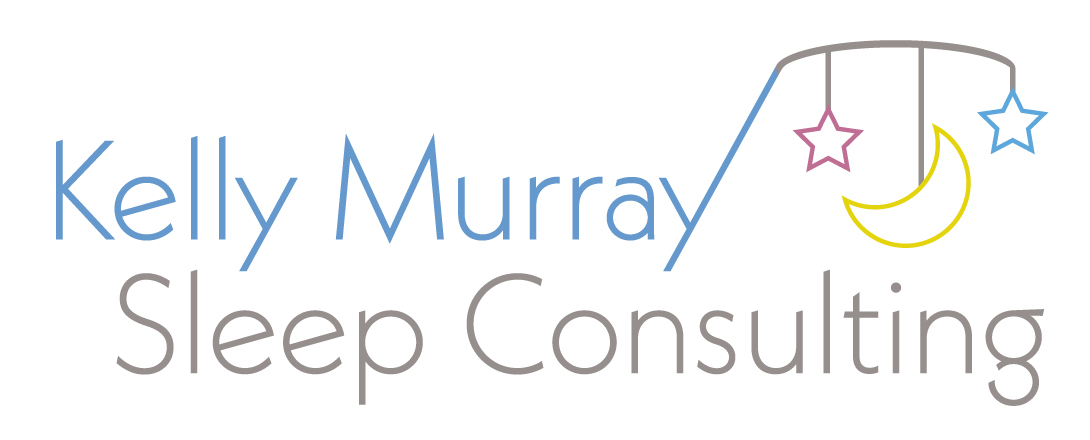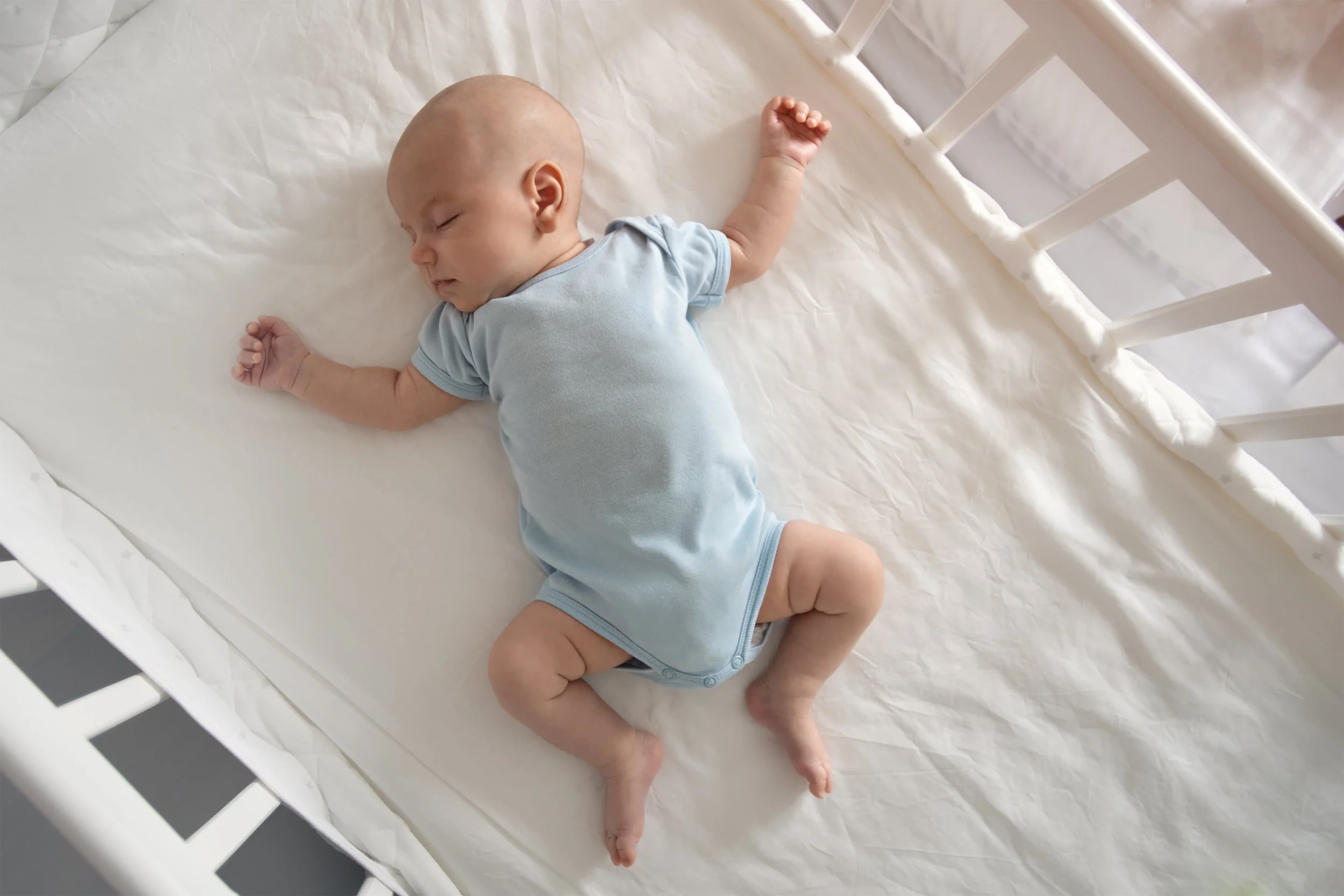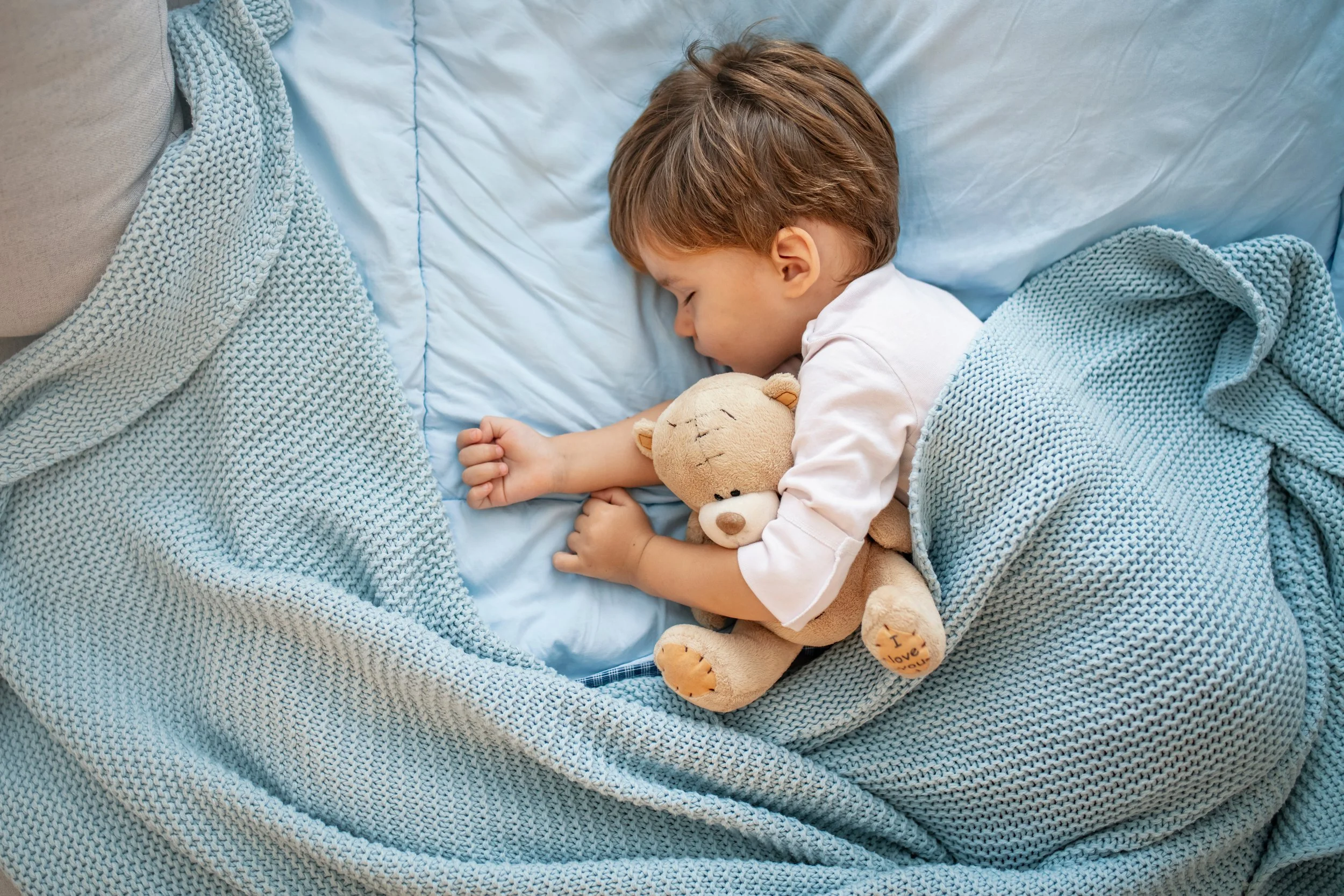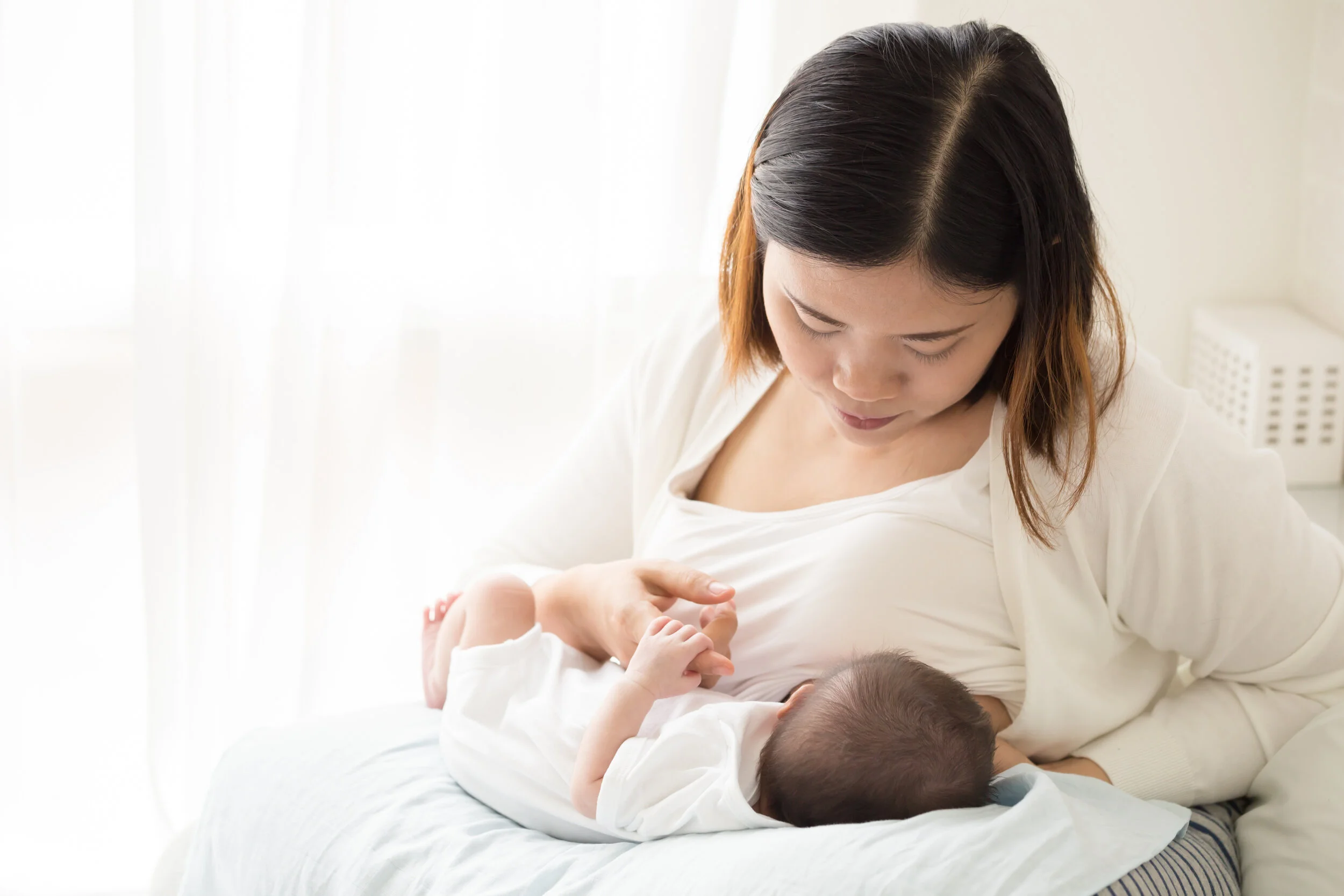On June 21st, 2022, the American Academy of Pediatrics (AAP) published an update to their list of Safe Sleep Recommendations in a policy statement: “Sleep-Related Infant Deaths: Updated 2022 Recommendations for Reducing Infant Deaths in the Sleep Environment.”
The last update to the Safe Sleep Recommendations was made in 2016 — a full six years ago. As you can imagine, this new development has left many mothers, caregivers, many of my colleagues, and myself, a bit confused on some of the updates. So I decided to bring in an expert: my own children’s pediatrician, Dr. Payal Adhikari. I knew she could provide the best information on what we should do and should not do according to the new recommendations, and I was eager to hear her thoughts on them.
A Doctor’s Take On the Updated AAP Safe Sleep Recommendations
Kelly gets Dr. Payal Adhikari’s perspective on the 2022 updates to the AAP Safe Sleep Guidelines
What Are Some of the Most Important Updates to the Guidelines?
As Adhikari explains it, the point of these guidelines is to reduce — if not completely eliminate — Sudden Infant Death Syndrome (SIDS). SIDS is, unfortunately, something that happens in the first year of life where an infant dies without any known cause. “There is a whole trifecta on why this happens, but the point of the guidelines is to use data from case-controlled studies to reduce the incidents of SIDS, to make sleep as safe as possible for our littlest babies,” says Adhikari.
A lot of the guidelines are the same — if not the exact same — as they have been for years. That said, some of the notable highlights are…
Always position baby to sleep on a firm, flat surface
The newest guideline says that a baby’s sleeping surface should not be inclined. We used to advise for babies experiencing severe reflux or who prefer to be on a slight incline that you could incline just a little. Now, however, the recommendation states that up to 10˚ of an incline is not considered safe.
Of course, every baby is different and your baby’s anatomy should be taken into consideration. If you have any questions about your child sleeping on an incline, ask your pediatrician. They will be able to best guide you according to your baby’s anatomy (placement of trachea, esophagus, etc.)
And as for reflux?
For babies who are having a difficult time laying flat due to reflux, Adhikari recommends burping them well, especially those who have severe reflux, and offering smaller feedings of milk or formula more frequently. She advises that while this can help, it can also make feeding more frequent overnight. “Still, with babies, even if they have reflux, they should be safe on their backs,” says Adhikari.
Reflux is one of those interesting things where it can get worse before it gets better. You may think to yourself, “Huh, my baby never spits up and now suddenly, AH!” It peaks between four to six months and usually gets better when the baby becomes stronger and spends more time sitting up. Adhikari says, “Keep your burp rags everywhere and carry an extra set of clothes with you and you’ll get through it!”
2. Room Share with Baby Until At least 6 months of Age — with baby in their own sleep space
One thing the AAP continues to reiterate in these guidelines is the location of sleep. You want the baby to be sleeping the parents’ room — but in a separate sleep space. “I know a lot of parents and cultures where co-sleeping is the most comfortable method for them, but the AAP recommends a separate sleep surface for the baby — a bassinet or crib near your bed — something where you couldn’t potentially roll over onto your baby,” states Adhikari.
When can baby move to their own room?
Adhikari explains that this can be a tricky one based on the size of your home. For some families in larger homes, room sharing with baby could mean having a crib 10 feet away from the parents’ bed, versus a smaller apartment where even a bassinet in the room can take up quite a bit of space. Adhikari explains, “For some parents, it becomes a tradeoff: if a parent is exhausted because they’re having difficulty sleeping next to their baby who is making noises all night (which is normal!), then at what point does the parent become a bigger risk to the child because they’re sleep deprived? Remember that a lot of these guidelines are recommendations and nothing is completely written in stone.”
Her bottom line: “It’s a case-by-case basis. Try for at least 6 months to room share if you can.”
3. Feed baby overnight somewhere unassociated with sleep — and do something to keep yourself awake
When it comes to bed sharing, the risk of SIDS increases tenfold. But one thing that stands out in the new guidelines is the following recommendation for parents who fall asleep while feeding:
Does this mean you should feed your baby in bed if you’re prone to falling asleep?
Not necessarily. Instead of feeding your baby in bed at all, Adhikari advises going into a separate room entirely to feed your baby — ideally a guest room (where you can use a bed if necessary), or the kitchen or a home office, and do something that keeps your mind engaged, like watch a stimulating show.
The association between the bedroom and sleep is actually something I work on with clients all the time, both pediatric and adult. Environment plays such a big role in triggering sleep.
4. Weighted Swaddles and Sleep Sacks — as well as constricting sleep suits — are a no-no
One of the most notable updates to the AAP Safe Sleep Recommendations is the guideline against using weighted swaddles and sleep sacks. Adhikari clarifies this means constricting sleep suits, as well. She says:
“If any part of the swaddle or sleep sack is weighted, it’s unsafe for sleep. As a pediatrician, even apart from the sleep guidelines, you don’t want your child to be weighted at night. Especially when they’re hitting that three/four month mark, you want them to be unswaddled in their crib so they can move around. That’s really where babies get most of their exercise — in their crib! You’ll notice on the monitor that they move around all over the crib at night. It’s really important for them to be able to get that exercise to build muscle strength to help them eventually learn how to roll over, sit up, and crawl.”
When our clients are transitioning their baby from a swaddle to a sleeveless sleepsack but still have a strong Moro reflex, we recommend the Zippadee-Zip. Adhikari gives this star-shaped sleep sack the seal of approval. However, she warns against using constricting sleep suits that prevent baby from moving at night: “I see kids who come into my office at six months and they’re not rolling over, they have flat heads, and 9 times out of 10, they use a [marshmallow-jacket-like] suit. It’s really not ideal for sleep. It’s time to get them in a sleep sack.”
(For a list of recommended swaddles and sleep sacks, head to my Sleep Resources page→)
5. Do Try to get baby to take a pacifier — to a point
The recommendations talk about introducing a pacifier once breastfeeding has been well-established, but this can vary depending on the baby. A lot of babies won’t accept a pacifier and many experience difficulty doing so. It begs the question:
How much do you try to push the paci?
Adhikari says to, “Pick one type and go with it. Then keep trying.” The key however, is to offer the pacifier in situations where pacifying isn’t needed. If the child is always associating the pacifier with situations where they’re upset, then the pacifier will have a negative association. Instead, offer the pacifier in moments when your child is happy and fed, or when they’re playing with you.
When to drop the paci?
Adhikari recommends fading out pacifier usage starting at 9 months of age, and then by 12 months she recommends it out of the picture. “The longer you wait, the harder it is to get rid of.” It can often become more of a prop for the parent than the baby, so rip that bandaid off and go for it! It takes about 3 days for the baby to adjust to any change, and adjusting to losing the pacifier is no different.
(For tips on how to get rid of the pacifier, check out our blog posts When It’s Time to Ditch the Paci and How to Do It and The Pacifier: Friend or Foe?)
6. Be mindful about monitoring devices
While heart rate and pulse oximetry monitoring devices, including wearable monitors (wellness devices) can give peace of mind to parents, the AAP warns that they may create some complacency in parents. The guidelines warn against relying on the monitor instead of being diligent in paying attention to the child.
These wellness devices also tend to create a lot of anxiety for parents when their alarms sound but the child looks fine. It can be difficult trying to interpret the situation. So be sure you are in tune with your child outside of the wellness device.
7. No more sleeping caps
A lot of parents put hats on their babies. The new recommendations say that’s fine for the first couple hours of life and if the baby is in the NICU and and has thermoregulation issues. “Other than that, however, we don’t want to keep hats on our babies when they sleep,” says Adhikari.
8. Refer to the CPSC
If you ever have a question about a product and are wondering if it’s safe for your child’s sleep, you can check the Consumer Product Safety Commission as a reference. Adhikari explains it’s easier to search if a product is “not safe” versus if a product is safe. More importantly, though, she says, “Be careful about lingo. Look at products showing a baby resting on something — that doesn’t mean it’s safe for sleep.” Just because an item is called a “lounger” doesn’t mean it’s a sleeper. Stick to the firm mattress in bassinets and cribs. We know those are safe.
Learn More
If you’re curious about sleep training and want to know more about how we follow Safe Sleep practices with our method, please give us a call. We’d love to talk to you.
Maybe you don’t need to work one-on-one, but you want a program you can follow at your own pace.
Check out our on-demand digital program → The Murray Method for Babies and sleep train your child on your own time.
All team members have completed training with Kelly and have learned the Murray Method. Kelly continues to support, guide and oversee the Sleep Squad as they work with the families who trust in us. This way, all clients are able to experience the same amazing results (and lots and lots of sleep).
















